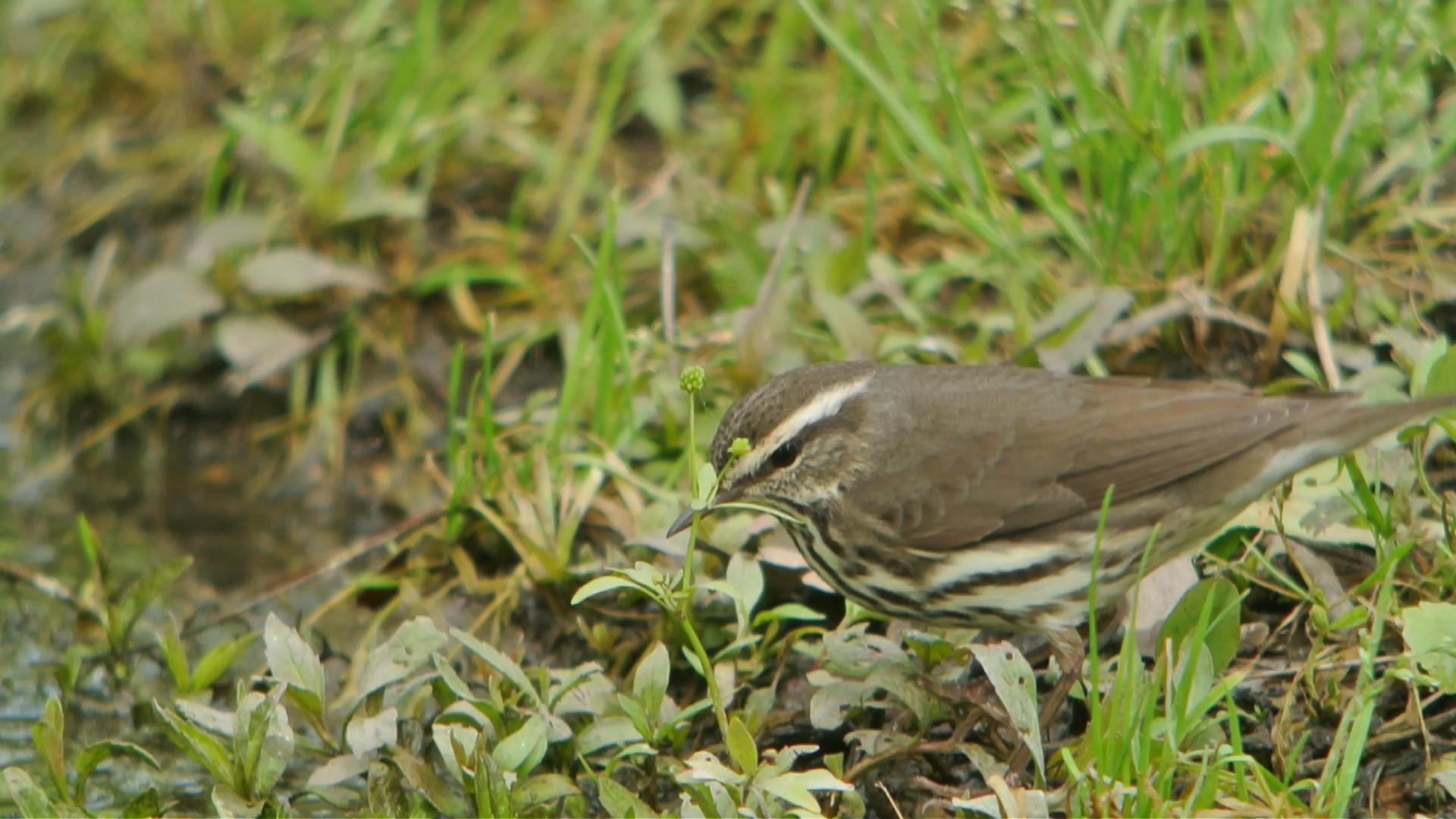Northern Waterthrush
A species of Waterthrushes, Also known as Common Water Thrush Scientific name : Parkesia noveboracensis Genus : Waterthrushes
Northern Waterthrush, A species of Waterthrushes
Also known as:
Common Water Thrush
Botanical name: Parkesia noveboracensis
Genus: Waterthrushes
Content
Description General Info
 Photo By Andy Reago & Chrissy McClarren , used under CC-BY-2.0 /Cropped and compressed from original
Photo By Andy Reago & Chrissy McClarren , used under CC-BY-2.0 /Cropped and compressed from original Description
The northern waterthrush is a large New World warbler (and not a thrush, despite the name). It has a length of 12–15 cm (4.7–5.9 in), wingspan of 21–24 cm (8.3–9.4 in) and weighs between 13 and 25 g (0.46 and 0.88 oz) Among standard measurements, the wing chord is 6.8 to 8.2 cm (2.7 to 3.2 in), the tail is 4.5 to 5.7 cm (1.8 to 2.2 in), the bill is 1.1 to 1.2 cm (0.43 to 0.47 in) and the tarsus is 1.9 to 2.3 cm (0.75 to 0.91 in). On the head, the crown is brown with a white supercilium. The bill is pointed and dark. The throat is lightly streaked brown to black with heavier streaking continuing onto the breast and flanks. The back is evenly brown. Sexes are morphologically similar. Young birds have buff, rather than white underparts. The only species bird watchers confuse with the northern waterthrush is the closely related Louisiana waterthrush (Parkesia motacilla), which has buff flanks, a buff undertail, and bright pink legs. The Louisiana waterthrush also has a whiter throat with fewer streaks. More subtle clues include smaller size and smaller bill, a narrower and darker eye-line, and different call note and habits. Both waterthrush species walk rather than hop, and seem to teeter, since they bob their rear ends as they move along. 
Size
15 cm (5.75 in)
Colors
Brown
Black
Yellow
Bronze
Gray
White
Life Expectancy
8 years
Nest Placement
Ground
Clutch Size
3 - 5 eggs
Incubation Period
1 brood
Feeding Habits
Northern Waterthrush primarily consume insects, spiders, snails, clams, fish, and salamanders. Their insect diet includes stoneflies, mayflies, caddisflies, ants, and weevils. They forage in shallow water and leaf litter, capturing prey from the surface, mud, or vegetation, and occasionally hunt insects mid-flight.
Habitat
Northern Waterthrush dwell primarily in shaded, wet forest areas such as swampy woods, bogs, and thickets near wetlands. These birds inhabit coniferous, mixed, and deciduous forests with dense ground cover, spanning various elevations but favoring lowland wet forests and riparian zones with willow and alder. During winter, northern Waterthrush inhabit mangrove swamps and moist highland forests.
Nest Behavior
Northern Waterthrush females select the nest site. Both sexes build the nest, primarily in root tangles of fallen trees, vegetation clumps by water, or stream banks. Egg-laying and incubation are the female's task, and both parents care for the young.
Nest Characteristics
The nest of northern Waterthrush is a shallow cup hidden by vegetation, often covered above with a side opening. It's constructed from grass stems, twigs, pine needles, mosses, rootlets, animal hair, and fine grasses. The outside may feature mosses and liverworts. Dimensions are approximately 2 inches tall, 4.2 inches wide, with an inner diameter of 2.4 inches and depth of 1.3 inches.
Dite type
Insectivorous
General Info
Feeding Habits
Bird food type
Bird Feeder Type

Ground
Sounds
Song
Recording location: United States
Song
Recording location: United States
Call
Recording location: Venezuela
Behavior
Northern Waterthrush exhibits distinctive behaviors, marked by a characteristic bobbing of their posterior as they forage along water's edges. Daily, these birds are agile in flight, often undulating over water, and males assertively defend territories up to 100 acres through singing and daring aerial pursuits. During courtship, males display raised feathers and wing vibrations, eliciting quiet calls from females. Territorial disputes are striking, featuring unique 'crouch-walk' displays where rivals confront each other with fanned tails and quivering wings. Even outside breeding season, males may exhibit territorial behaviors, though this depends on habitat quality.
Species Status
Not globally threatened.

 Photo By Andy Reago & Chrissy McClarren , used under CC-BY-2.0 /Cropped and compressed from original
Photo By Andy Reago & Chrissy McClarren , used under CC-BY-2.0 /Cropped and compressed from original Scientific Classification
Phylum
Chordates Class
Birds Order
Perching birds Family
New world warblers Genus
Waterthrushes Species
Northern Waterthrush